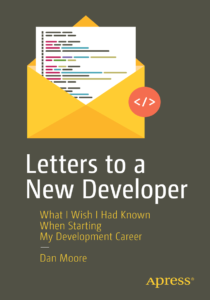As I get older, I wish I could reach back and give myself advice. Some of it is life advice (take that leap, kiss that girl, take that trip) but a lot of it is career advice.
There’s so much about being a software developer that you learn along the way. This includes technical knowledge like how to tune a database query and how to use a text editor. It also includes non technical knowledge, what some people term “soft skills”. I tend to think they are actually pretty hard, to be honest. Things like:
- How to help your manager help you
- Why writing code isn’t always the best solution
- Mistakes and how to handle them
- How to view other parts of the business
These skills took me a long time to learn (and I am still learning them to this day) but have had a material impact on my happiness as a developer.
I am so passionate about this topic that I’ve written over 150 blog posts. Where are these? They’re over at another site I’ve been updating for a few years.
And then I went and wrote a book. I learned a bunch of lessons during that process, including the fact that it’s an intense effort. I wrote it with three audiences in mind:
- The new developer, with less than five years of experience. This book will help them level up.
- The person considering software development. This book will give them a glimpse of what being a software developer is like.
- The mentor. This book will serve as a discussion guide for many interesting aspects of development with a mentee.
The book arrives in August. I hope you’ll check it out.
Full details, including ordering information, over at the Letters To A New Developer website.
